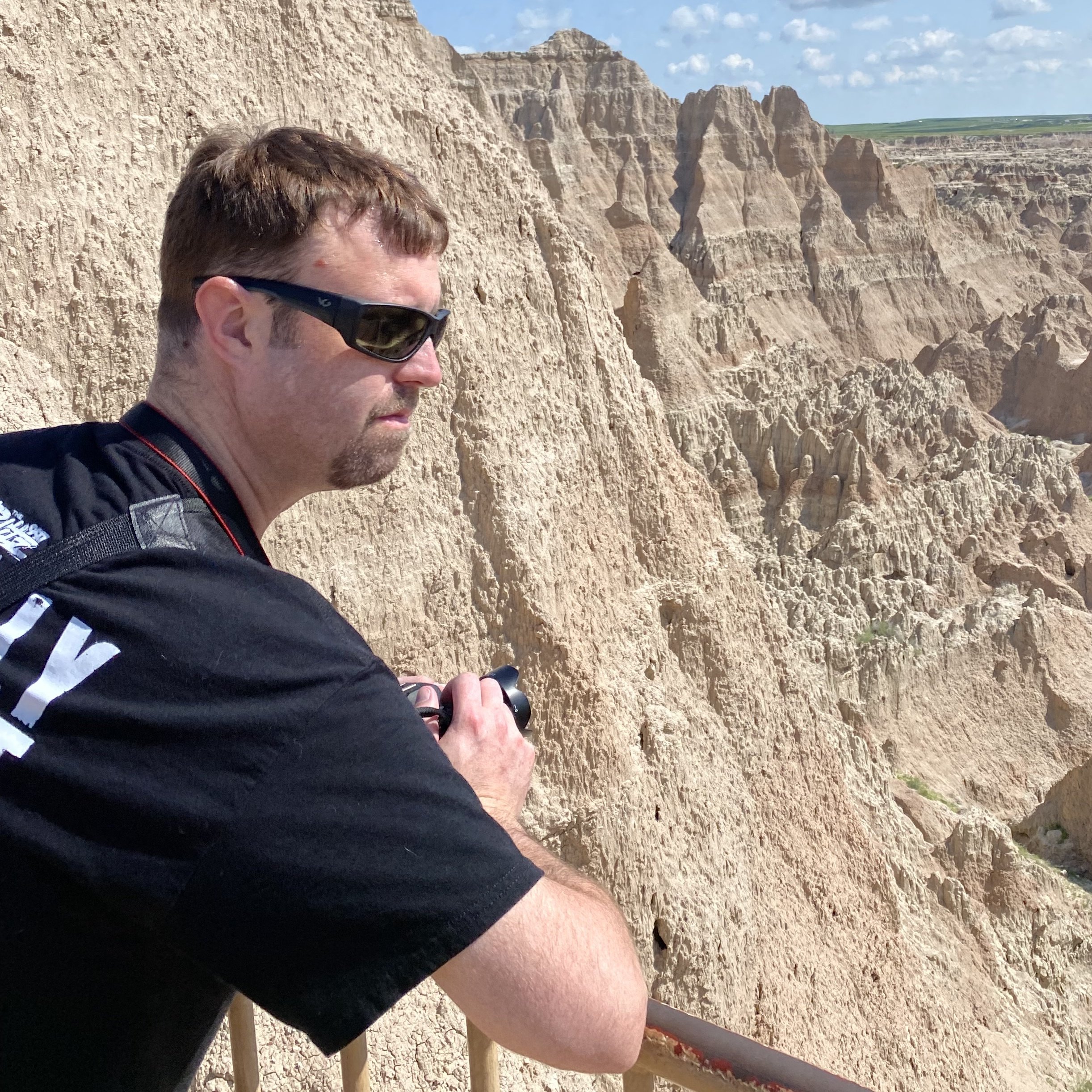Making a Palm Pilot getting a live connection to the internet through an infrared connection (Red Hat Linux). That was circa 2004, and I spent 10 hours, all night on it.
cool, now find another distro
Sometimes … usually I just hit a wall because I don’t know enough but I know enough to get myself in trouble … so I just stop, reformat, reinstall and start all over.
About the biggest lesson I’ve learned from Linux is not to mess with too many things unless you want to learn about it and have lots of time in your hands.
Otherwise if you find a good distro for your needs, a stick with it, don’t change it, update and backup regularly.
Grub.
Seriously. Tha was some fat as shit because I didn’t know what I was doing.
Bricked my pc twice because of the bootloader and couldn’t repair it. From now on i just nuke my system if something is fucky and have a shell script do the installing of packages etc.
I broke my bootloader fucking with uefi settings. I was in a panic for a few hours because I hadn’t bothered to learn how that shit worked until then.
It sure was a relief when i got back into my system.
I have two, one is actually complicated and one was so obtuse that I never would have figured it out in a million years:
Actually complicated: I still don’t know how it happened, but somehow an update on Arch filled the
bootpartition with junk files, which then caused the kernel update to fail because of no disk space, which then kind of tanked the whole system. It took ages, but with a boot disk and chroot-ing back into the boot partition I eventually managed to untangle it all. I was determined to see it through and not reinstall.Ridiculous: One day when using Ubuntu, the entire system went upside-down. As in, everything was working perfectly fine, but literally the screen was upside-down. After much Googling I had no luck figuring it out, then I accidentally found the solution - I’d plugged a PS4 controller into the USB on the laptop to charge it, and for some reason Ubuntu interpreted the gyroscope on the controller as “rotate the screen display” so when I moved it, the screen spun round. I only figured it out by accident when I plugged it back it and it spun back to normal lol.
Ridiculous: One day when using Ubuntu, the entire system went upside-down. As in, everything was working perfectly fine, but literally the screen was upside-down. After much Googling I had no luck figuring it out, then I accidentally found the solution - I’d plugged a PS4 controller into the USB on the laptop to charge it, and for some reason Ubuntu interpreted the gyroscope on the controller as “rotate the screen display” so when I moved it, the screen spun round. I only figured it out by accident when I plugged it back it and it spun back to normal lol.
LMAO what the fuck?
Not quite the same, but amusing peripheral issues can happen on Windows, too.
deleted by creator
Ridiculous
I had a similar one. I had a usb-powered fan cooling pad that my laptop was sitting on. My laptop would randomly go into boot loops when I turn it on. I thought it was a grub issue so I always had my usb stick ready to re-install grub. Did some dusting one day and forgot to plug in the cooling fan, then the boot loop never happened again. Turns out it was the fan plugged into the usb that was causing it.
A couple years ago on Reddit I saw a story where a dude working IT support had to drive to a remote office or replace a workstation that wouldn’t boot. When he got there the lady whose desk it was had some shitty USB fan or maybe an led Christmas tree plugged into one of the USB ports. He unplugged that and the pc booted fine.
I think this is likely related to USB cables as power cables and USB ports/voltages.
I have seen a lamp completely fry a MacBook. I wouldn’t be surprised to see something similar cause a boot loop.
Semi-related note… displayport cables can cause a no-boot condition too. I think it was the existence of Pin#1. I had to duct tape that one pin and my computer finally booted up.
The controller thing is goddam hilarious
This deserves some sort of funniest Linux problem award.
This is up there with the
redacted(just looked it up it’s called the 500-mile email)This is a phenomenal read. Thank you for sharing lol
Ah I remember that one! Classic. I also remember a story about someone who lost an entire PC in their apartment. It was running and connected to the network, they could ping it, but couldn’t physically find it lol.
😂 Please ping me if you find it (the story)…
Around 2003-2004. I was still a bit of a Linux noob, just getting to grips with Gentoo.
Had two no-name WiFi adapters that weren’t directly supported under Linux. Found some obscure forum thread that mentioned them, along with which lines in which source code driver to change to make these adapters work.
Wow nice one! I don’t think anyone outside of Gentoo or LFS would even go there.
I’ve generally had good luck with hardware and things just worked under linux. But one day I upgraded a few machines on my network to 2.5G ethernet. Several already had the ports, but my little NUC NAS box didn’t, so I installed a 2.5G usb ethernet dongle. No matter what I did, I couldn’t get it to work. It would show up and NM would act like it was up and there were no errors or anything, but it just wouldn’t actually function.
Eventually, I found out that it has a built in USB data partition that contains the drivers for windows. The card was coming up as a usb disk first when the hardware was assigned and not a network card which it should have been.
I had to write a blacklist the usb modules first, which I had done before, but I had to also write a udev rule to automatically add the network card and driver on boot. It wasn’t that difficult to actually do, but I had just never had to do anything with udev rules before. Took me a good three days of troubleshooting to finally get everything to work correctly on boot.
ACTION=="add", ATTRS{idVendor}=="20f4", ATTRS{idProduct}=="e02c", RUN+="/sbin/modprobe r8152" RUN+="/bin/sh -c 'echo 20f4 e02c > /sys/bus/usb/drivers/r8152/new_id'"Installed fedora on btrfs and upgraded from 38 to 39 week after installation, everything broke so bad, even ssd which was used for it locked, not just filesystem, ssd was new btw
Upgrading the system I removed glibc from the system (Debian). apt wasn’t working, etc. Had to manually fix dependencies and everything. Currently my working OS so all fixed.
Fixed a typo in my /etc/fstab that prevented the NAS from mounting. I am a bear of little brain. But I’m also proof that you don’t have to be some master hacker to successfully run Linux.
This is something I’ve had to do a few times.
Saved me from reinstalling. Made me realise that there really should be an alternative to typing into fstab by hand since us humans will make mistake. Either that or make fstab nog crash completly on an error but just skip it.
I have no idea how widespread it is among other distros, but ArchLinux’s bootable install disk/iso comes with a
genfstabcommand that snapshots your current mount points and outputs it as a fstab.You still need to figure out where and how to mount everything yourself, but at least it saves you from most typos that could otherwise end up in the fstab file.
That’s nice.
I know that the disk utilty in Ubuntu gives you the option to automatically mount a (secondary) disk at boot. It adds it to fstab for you.
My first home server would get lost on the network every week, at different times and without any apparent reason. I performed hard resets by unplugging and plugging it back in.
After several months, I decided to connect a screen to it, and I initially thought it had hung up, but it hadn’t. After some investigation, I discovered that every time my router obtained a new dynamic IP address, the server lost its network connection, requiring a reset. I wrote a script to check the network connection every minute, and if it’s lost again, it will be reset.
Some of the crap I had to do back in the late 00s to get wifi, sleep and power management even barely working on some machines felt like the hardest thing at the time. I wonder how I’d fare with those issues today, 17 years later, knowing quite a bit more about the underlying OS and working with the OS daily… I don’t know that I’d qualify that as difficult more than it was extremely tedious and a bunch of trial and error of configuration options I didn’t know anything about.
If we’re talking about modern day… not so much honestly. btrfs snapshots saved my ass a couple of times, the rare issue I encounter I just rollback and wait for an upstream fix, and the rest I typically ignore or use something else. Everything tends to run quite smooth for me as a general rule, though.
For me it was migrating my Arch install from EXT4 to ZFS. GRUB had to be configured in particular ways to get it to work with ZFS and I didn’t do it properly so it wouldn’t/couldn’t boot.
Then I updated ZFS to a version that wasn’t supported by GRUB yet so I chrooted into my installation to switch to Systemd-boot with Unified Kernel Images. Now I still can’t figure out how to add a boot entry for Windows. I followed the proper steps I think but selecting the Windows entry just reloads Systemd-boot.
A couple months ago, I made a Palworld server box out of a spare motherboard assembly (mobo, processor, ram) from a computer I had recently upgraded.
I didn’t have any spare drives lying around, so I plugged in 7 USB flash drives and made them into a RAID array. Not a true RAID array, but a BTRFS filesystem with volumes spread onto each flash drive, with the data redundancy set to raid1, and the metadata redundancy set to raid1c3.
It worked… in the sense that I never lost any data. It certainly didn’t work in the sense of having good uptime.
The first problem was getting it to boot right. The boot line in GRUB had “root=UUID=…” instead of a specific drive named. That is normal. However, in BTRFS multi-volume filesystems, all the volumes have the same UUID. So the initrd was only waiting for a single drive matching that UUID, then trying to mount it as the root filesystem. This failed, because the kernel had not yet set up the other 6 USB drives, and this BTRFS filesystem needs all 7 volumes present. Maybe 6, if you used the “degraded” mount option.
The workaround was to wait for this boot process to fail, at which point you get dropped into an initrd shell. Then, you look at all the drives and make sure they’re all there. And then… I don’t exactly remember what happened next. I think it was some black magic that erases your mind in the process. I somehow got it booted from the initrd shell.
Installing Steam and the Palworld server worked ok, and it even ran for a few hours before crashing overnight.
The next morning, I tried rebooting it. Unfortunately, the USB drives weren’t all appearing. Turns out the motherboard had some bad USB ports, some sometimes-bad USB ports, and a maybe-bad PCIe bus, because the PCIe USB expansion card I plugged in had weird problem that it had never had before.
I found the most reliable ports and plugged the drives in there. But you can’t just replug them in the initrd. It doesn’t have USB hotplug support. So each time it tried to boot with not all the drives there, I restarted it again until one time I finally had all the drives.
I changed the GRUB boot line to “root=/dev/sdg1” . This made it wait for all the drives to load, in any order, and whichever one was last would be mounted as the root filesystem (but the kernel would automatically include all the others too, since they were successfully initialized).
The bad USB ports kept bringing down the server every day or two. I bought a cheap NVMe drive and added it to the BTRFS filesystem, and then removed all the USB drives except the largest. That fixed the reliability. It’s been like that since.
Now, to boot the server, all I have to do is change the GRUB boot line to “root=/dev/sdb1” . Since the NVMe drive is much faster than the USB drive, it always initializes first. If the initrd waits for sdb2, then it will always have both drives initialized when it tries to mount the root filesystem.
I could add that to the grub.cfg, or come up with some other more permanent solution, but I’m not planning on rebooting this server ever again. My friends fell off Palworld, and I gave a shutdown date that’s about a week away. And the electricity is pretty reliable here.
Biggest thing I noticed after switching is forum posts. In Linux ones you usually get a fix where the Windows ones 9/10 they just advise you reformat
Used to be messing with kernel arguments and installing/tweaking boot parameters. That was until Grub broke, I learned systemd-boot and chrooting into the system via live USB
Now if I break anything it’s just a matter of “sigh, let me get the USB and type a few commands”











